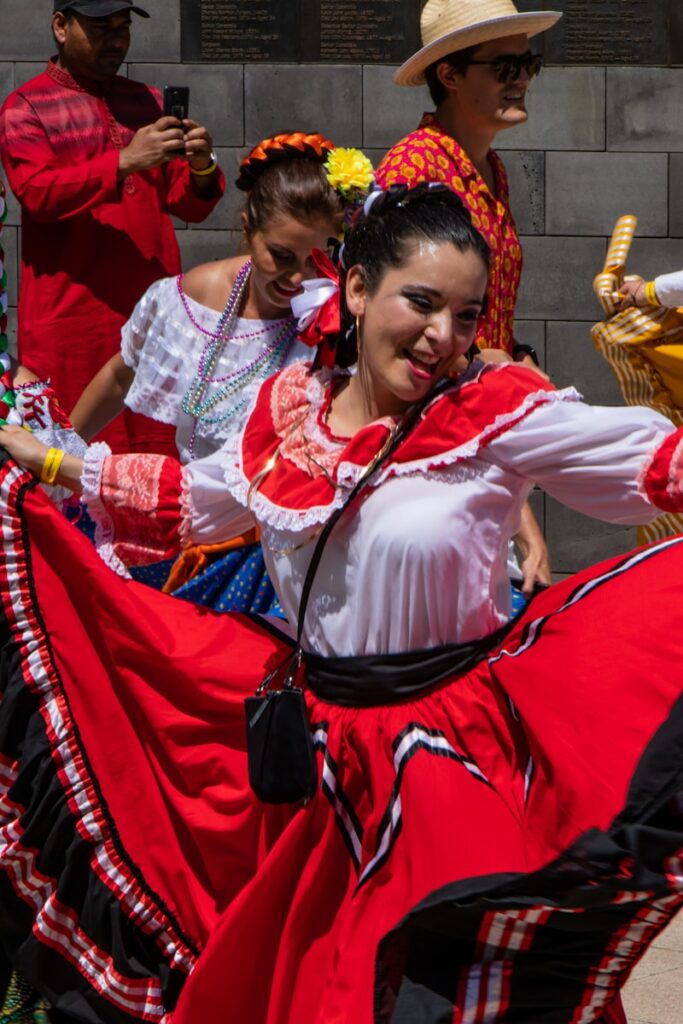How to Ask Someone’s Name in Spanish: A Comprehensive Guide
Imagine you’re on a sun-soaked beach in Cancún, the waves gently crashing at your feet. You’ve just met a friendly local, and you want to strike up a conversation, but there’s one small problem—you don’t know how to ask their name in Spanish. It’s a simple yet crucial step in building a connection, and it can feel a bit daunting if you’re not familiar with the language.
Don’t worry, though. By the time you finish reading this, you’ll confidently ask, “¿Cómo te llamas?” with a smile. Learning this phrase is more than just mastering words; it’s about embracing a new culture and opening doors to unforgettable experiences. Plus, it’s easier than you think! So, let’s immerse and make sure you’re ready for your next Spanish-speaking adventure.
Asking Names in Spanish
Feeling a bit nervous about introducing yourself in Spanish? Don’t worry, it’s simpler than you think! Let’s jump into how you can confidently ask someone’s name in Spanish while making a great impression.
The Importance of Proper Introductions
In Spanish-speaking cultures, first impressions matter a lot. When you ask someone’s name, you’re not just inquiring about a label; you’re acknowledging their identity and showing respect. Imagine meeting someone older or a person of authority. Addressing them correctly can set the tone for a positive interaction. Using titles like “Señor” or “Señora” before their surname demonstrates respect. Next time you introduce yourself, try saying:
These small touches can foster mutual respect right from the beginning.
Cultural Significance of Names in Spanish-Speaking Countries
Ever wondered why names carry weight in Spanish-speaking cultures? Names often reflect deep familial and cultural heritage. It’s common to name children after grandparents or relatives to honor family legacy. So, when someone tells you their name, they might be sharing a piece of family history with you.
Here’s a quick look at the cultural significance:
Aspect | Detail |
|---|---|
Family Heritage | Names often passed down generations |
Cultural Identity | Reflects cultural pride and belonging |
Respect for Elders | Naming shows reverence for older relatives |
By understanding this, you get more than just a name; you glimpse into someone’s personal story.
Building Rapport Through Language Skills
Using someone’s name correctly goes a long way in building rapport. It shows you’re making an effort to connect and respect their identity. Even if your Spanish isn’t perfect, the act of trying can break down barriers and open doors.
Consider this scenario: you’re at a social event, and you want to introduce yourself to a group. You could start with:
Such an approach helps you connect on a deeper level and shows genuine interest in others.
Basic Phrases for Asking Someone’s Name
Engaging with Spanish speakers starts with knowing how to ask their name. This simple gesture sets the stage for meaningful connections and shows respect for their culture.

Formal Expressions
Formal expressions show respect, particularly in professional settings or when meeting someone for the first time.
“¿Cómo se llama usted?”
Use “¿Cómo se llama usted?” to ask someone’s name formally. Picture meeting an elder in a Spanish-speaking community; this phrase acknowledges their status with respect. It translates to “What is your name?“
“¿Cuál es su nombre?”
“¿Cuál es su nombre?” is another formal way to ask for a name. You’d use this when speaking to someone you don’t know well or in a professional setting. This phrase emphasizes the possessive adjective with “su,” denoting respect.
Informal Expressions
Use informal expressions in casual conversations with friends or peers.
“¿Cómo te llamas?”
“¿Cómo te llamas?” is the go-to phrase for asking someone’s name informally. It translates to “What’s your name?” and is perfect for friendly encounters at social gatherings.
“¿Cuál es tu nombre?”
“¿Cuál es tu nombre?” mirrors the formal version but swaps “su” for “tu,” ensuring a relaxed, informal tone. It’s another way to ask, “What’s your name?” when chatting casually.
Regional Variations and Alternatives

Different regions might have unique ways of asking someone’s name. While these core phrases are universally understood, local vernacular can add flavor to your conversations. Keep your ears open for regional twists to these expressions to deepen your connection with diverse Spanish-speaking communities. Understanding these variations enriches your cultural immersion and keeps conversations engaging.
Responding to Name Questions in Spanish
When asking someone’s name in Spanish, it’s just as important to know how to respond confidently. Learning these basic responses can help you build meaningful connections in Spanish-speaking cultures.
Providing Your Own Name
When someone asks for your name, you can choose between formal and informal responses:
- “Me llamo” + your name (e.g., “Me llamo Juan”)
- “Soy” + your name (e.g., “Soy Juan”)
Use “Me llamo” in formal settings, like business introductions or when you meet someone new. Go with “Soy” in casual situations, like chatting with friends or acquaintances.
Common Follow-Up Phrases
After sharing your name, it’s natural to keep the conversation flowing. Here are a few common follow-up phrases to engage further:
Spanish Phrase | English Translation |
|---|---|
Mucho gusto | Pleased to meet you |
El gusto es mío | The pleasure is mine |
¿De dónde eres? | Where are you from? |
¿Cuál es tu apellido? | What is your last name? |
These phrases help sustain the interaction and show genuine interest in getting to know someone better.
Polite Responses And Etiquette
Politeness matters in any language. In Spanish-speaking cultures, using polite responses and showing the right etiquette can make a big difference:
- Always say “Mucho gusto” upon meeting someone. It’s a polite way to show pleasure in making their acquaintance.
- When responding to “¿Cómo se llama usted?“, use “Me llamo” + your name. This maintains formality and respect.
Consider cultural nuances: In Spain, addressing someone as “tú” (informal “you”) might be more common, whereas in Latin America, “usted” often prevails in initial interactions.
Remember, these simple yet thoughtful responses can make your conversations more authentic and respectful.
Contextual Considerations for Name Exchanges
Knowing how to ask someone’s name in Spanish can make all the difference in forming meaningful connections. Different settings and the dynamics between age and status influence how you should approach these interactions.
Professional vs. Casual Settings
In professional settings, using formal phrases shows respect and professionalism. You might ask, ¿Cuál es su nombre? or ¿Cómo se llama?, signaling that you value the formality of the situation. On the other hand, in casual settings, such as meeting new friends, opting for ¿Cómo te llamas? is appropriate and fosters a friendly atmosphere. Drawing this line between professional and casual contexts keeps interactions respectful and engaging.
Age and Status Differences
Age and status heavily influence name exchanges in Spanish-speaking cultures. Asking an elder or someone of higher status their name requires formality to demonstrate respect. ¿Cómo se llama? and ¿Cuál es su nombre? are suitable here. With peers or younger individuals, ¿Cómo te llamas? is both acceptable and warm. Recognizing the importance of these nuances avoids unintentional disrespect and builds positive rapport.
Group Introductions vs. One-on-One Conversations
Introducing yourself to a group differs from one-on-one conversations. For groups, use ¿Cuáles son sus nombres? to respectfully ask multiple people for their names. This acknowledges everyone present. In contrast, use ¿Cómo te llamas? for one-on-one interactions to make them feel personally valued. Adjusting your approach based on the number of people ensures that everyone feels respected and included.
Examples
Context | Spanish Phrase | Situation |
|---|---|---|
Professional Settings | ¿Cuál es su nombre? | Asking a colleague’s name |
Professional Settings | ¿Cómo se llama? | Asking a client’s name |
Casual Settings | ¿Cómo te llamas? | Meeting a new friend |
Group Introductions | ¿Cuáles son sus nombres? | Introducing yourself to a group |
Understanding these contextual considerations enhances your interactions in Spanish, making them more authentic and respectful. It’s not just about language, but about genuinely connecting with people.
Common Mistakes to Avoid
Asking someone’s name in Spanish can feel tricky if you’re not familiar with the language. Avoid these common pitfalls to ensure smooth, respectful interactions.

Verb Usage Errors in Name Questions
One frequent mistake involves using the wrong verb. “¿Qué es tu nombre?” may seem correct, but native speakers find it odd. The right way to ask is “¿Cómo te llamas?” for informal settings or “¿Cómo se llama?” for formal ones. Think of it this way: “¿Cómo te llamas?” literally means “How do you call yourself?”, making it the natural choice among Spanish speakers.
Formal vs. Informal Address Confusion
Another area ripe for errors is confusing formal and informal addresses. Use “¿Cómo se llama?” in formal situations. This shows respect, crucial when meeting someone’s parents, teachers, or in professional contexts. On the flip side, “¿Cómo te llamas?” is perfect for casual settings, like talking to friends or young people. Mixing these up can create awkward moments, so think about your relationship with the person before you ask.
Cultural Faux Pas in Name Interactions
Exploring name interactions involves more than just grammar; it’s about cultural respect too. If you don’t catch someone’s name the first time, don’t panic. Politely ask them to repeat it with “¿Me lo podrías repetir?”. This shows you’re making an effort, which goes a long way in Spanish-speaking cultures. Repeating a name until you get it right not only helps you remember but also builds a connection with the person.
Context | Formal | Informal |
|---|---|---|
Professional | ¿Cómo se llama? | N/A |
Social | N/A | ¿Cómo te llamas? |
Repeating Name | “¿Me lo podrías repetir?” | “¿Me lo podrías repetir?” |
Choosing the right phrase and approach reflects your respect for Spanish culture. Why care? Because names carry identity and heritage, and getting it right can enrich your relationships even in brief encounters.
Conclusion: Becoming Confident in Spanish Name Interactions
Mastering the art of asking someone’s name in Spanish is more than just learning a few phrases. It’s about embracing a culture and showing genuine respect. By understanding the nuances and practicing the right approach, you’ll find yourself connecting more authentically with Spanish speakers.
Remember to pay attention to the formality of your interactions and avoid common mistakes. This will not only help you communicate effectively but also demonstrate your appreciation for their culture. With these tips, you’re well on your way to becoming more confident in your Spanish name interactions. Happy learning!
Frequently Asked Questions
How do I ask for a person’s name in Spanish?
To ask for someone’s name in Spanish, you can say “¿Cuál es tu nombre?” for informal situations or “¿Cuál es su nombre?” for formal situations. Another common phrase is “¿Cómo te llamas?” which means “What is your name?” in an informal context.
What is the meaning of “Mucho Gusto”?
“Mucho Gusto,” pronounced Moo-cho Goo-stow, means “Nice to meet you.” This phrase is used when meeting someone for the first time and can be used both at the beginning and the end of a conversation.
Is “¿Qué es tu nombre?” correct?
No, “¿Qué es tu nombre?” is not correct. The proper way to ask someone’s name is “¿Cuál es tu nombre?” or “¿Cómo te llamas?” both of which are grammatically accurate.
How do you politely address someone in Spanish?
In Spanish, you address someone formally using “usted” instead of “tú.” For instance, “¿Cómo se llama usted?” is a respectful way to ask for someone’s name, while “¿Cómo te llamas?” is used informally.






